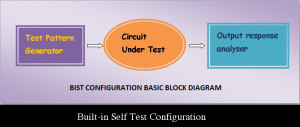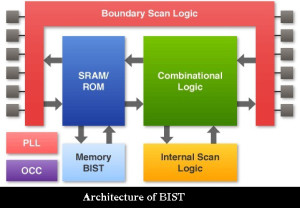Today i had a thought of writing this article as there are many such machines which use this mechanism for self testing. This system best suite’s for VLSI technology explained in my previous article on VHDL programming language. So, let’s now get on with BIST i.e. What is BIST??
BIST is a Design-for-Testability (DFT) technique, as it helps in verification of problems, faults by self testing. In terms of VLSI designs it performs a task of testing VLSI chip to guarantee its functionality which is extremely complex and often very time consuming. It is a widely accepted approach to deal with the testing problem at the chip level. This increases the controllability and the observability of the chip, making the test generation and fault detection easier. It thereby helps in reducing dependence on external automated test equipment (ATE). Due to this technique the dynamic properties of the circuit can be tested at speed. It can be used for delay testing as it can be used in real time.
In conventional testing, test patterns are generated externally by using computer-aided design (CAD) tools. The test patterns and the expected responses of the circuit under test to these test patterns are used by automatic test equipment (ATE) to determine if the actual responses match the expected ones which leads to a time consuming and tedious process. On the other hand, in BIST, the test pattern generation and the output response evaluation are done on chip, this helps in avoidance of expensive ATE machines to test chips.
There 4 main test pattern generation for BIST which are as follows:
- Exhaustive testing
- Pseudo-exhaustive testing
- Pseudo-random testing
- Deterministic testing
These test patterns will be covered in the upcoming posts..
Advantages:-
- Less cost of test, as there is no need of external electrical testing using an ATE.
- It has better fault coverage, since special test structures can be incorporated onto the chips.
- Requires less test times.
- It can be designed to test more structures simultaneously.
- Easy customer support.
It can perform tests outside the production electrical testing environment as well.
Applications:-
- Automation
- IC manufacturing- Especially very useful in microchips
- Computers
- Machinery
- Medical Instrumentation
- Military
- Aviation

